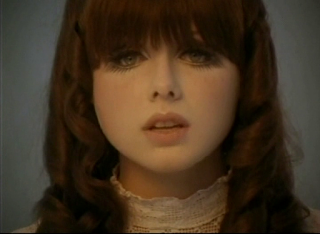They say that if you can remember the Sixties then you probably weren’t there in which case the participants in this film may have a gap in their recall for 1968 at least… As the country wrestles with the ins and outs of the EU you find yourself searching for the exact point in time when Britain actually was Great: the world wars undoubtedly but it’s harder when you really look elsewhere. The Victorian Empire may have seen our global domination at its peak but there were long depressions in the domestic economy and society was hardly egalitarian at home let alone in the colonies.
No. Let me put it to you that our greatest moment of being Great
was indeed the Sixties – a glorious filling of tie-dyed liberation sandwiched
between the austerity of the fifties and the strife of the seventies. So, is
that’s what the “leavers” want to return to? Probably not as I’d guess most of
them are far too square.
The Touchables is far from the greatest film of that decade but it does retain some power as an evocation of the endless possibilities of those hazed days. And it looks simply smashing!
Any film that has Pink Floyd’s Interstellar Overdrive sound-tracking a speed boat ride in a lake,
can’t fail to gain psychedelic points in my book and to cap that we also have
Nirvana (UK version) performing All of Us
over the closing credits. So, big tick for the groovy sounds man.
It’s also very hard to think of another film with such an
abundance of sublimely groovy women… it’s like Candy to the power of four with Esther Anderson, Marilyn Rickard,
Kathy Simmonds and the impossibly-lovely Judy Huxtable playing the central
quartet in mod-skirts and liberated foot-wear. They are four characters in
search of a plot though and no amount of razzle-dazzle can hide that.
 |
| Esther Anderson |
 |
| Judy Huxtable |
 |
| Kathy Simmonds |
 | |
| Marilyn Rickard |
Melanie (Esther Anderson) “Dancing Spice” who throws some
superbly-impressive go-go manoeuvres throughout the film is dating a
pro-wrestler Lilywhite (Harry Baird with dubbed American accent) who keeps
writing artistic cheques his intellect can’t quite cash. His house is full of
“genuine replicas” of classic Greco-Roman art and he comes up with almost-wise
comments such as “remember who leaps last always loses…” or some-such.
 |
| Ricky Star and Harry Baird share a moment |
 |
| David Anthony on TV |
 |
| Ricky takes Christian's manager for a ride |
Inside the dome, Christian is bound and informed of his
unusual fate. The girls have no specific agenda other than making sure that
they all sleep with him and Christian, being a star from 1968 is ultimately all
too happy to support this strategy in what becomes something like elective
abduction.
 |
| Approaching the dome... |
Things only turn serious when Christian tries to escape
back to commitments he’s sure he has. He is chased by the girls and Sadie on
horseback and shot in the head as he tries to escape by motorboat. This shocking moment of selfish violence is
soon forgotten when he emerges unscathed… Don’t worry, we’re not in that kind
of film seems to be the message.
 |
| A roundabout of affections... |
Dusty verdict: Just as a more urgent narrative breaks out we realise that there hasn’t really been one for much of the film. The Touchables is bubble-gum, easy watching but it doesn’t really have any point to make other than to reinforce the benefits of being young, lovely and free.
If there are any serious points on the contemporary
social situation they were lost on me with the film taking broad swipes at
social normality with a more tolerant eye than many would expect from 1968.
 |
| Judy in the sky with diamonds |
The Touchables
is pretty rare so I’m stuck with my old VHS but I’m sure that a DVD can’t be that far away given the enduring
appeal of the style if not the substance.

























No comments:
Post a Comment